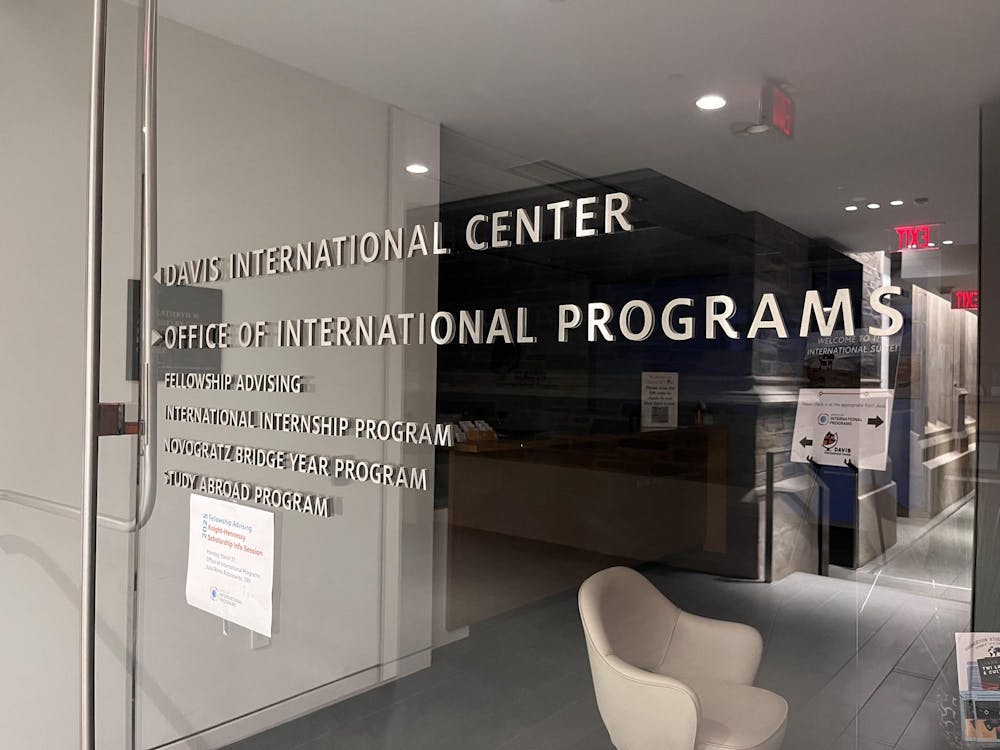Ten cases of sexual offenses were reported on campus during 2003, according to crime statistics to be released by the Department of Public Safety later this month.
That number is in line with the average of nine cases reported annually for the past three years.
All of the incidents last year were handled through the Sexual Harrass-ment/Assault Advising Resources and Education (SHARE) office of University Health Services.
None of the victims reported the incidents to campus or local law enforcement, a fact Director of Public Safety Steven Healy called "a problem."
The University's numbers put it at the high end of Ivy League schools. Princeton has reported 28 cases in three years, compared to 19 at the University of Pennsylvania and 12 at Columbia over the same period. Brown, Cornell, Dartmouth and Yale all reported fewer than 10. Only Harvard had more, with a three-year total of 64 incidents.
Comparisons across schools can be misleading, however, because of varying interpretations of the law.
The University's own reporting policies changed last year when Healy came on board. The 2003 crime statistics report was the first in which cases of sexual offenses that did not come through Public Safety were reported with the total instead of as a separate footnote.
Prior to the change, the published number of offenses was zero or one each year.

"In looking at the previous reports, the way they were reported, it did not seem as if they were completely telling the whole story," Healy explained.
Under the federal Jeanne Clery Act, universities must disclose how many cases of forcible sexual offenses – defined as sexual acts committed against someone's will or without consent – are reported to campus police, local law enforcement and other officials who have "significant responsibility for student and campus activities."
That applies to deans, coaches and other residential life figures but excludes clergy, counselors and medical providers.
Not every official fits neatly into one of these categories, however. "They're not the most clear guidelines," said Maura Bairley, director of Sexual Violence Prevention and Response Program Health Services at Columbia. "My sense is that there's a lot of variation, because schools are organized differently."

At Princeton, SHARE counselors are technically exempt but have opted to report the number of cases they encounter each year. Healy attributed the choice to the belief that "an informed community is a safer community."
The SHARE office could not provide comment, due to the recent departure of coordinator Thema Bryant-Davis.
Statistics unclear
Moreover, studies have shown sexual assault figures to be notoriously unreliable. Every academic year, 3 percent of college women experience an attempted or completed rape, and 16 percent are victims of sexual violence, according to a study by the Department of Justice (DOJ). That would translate to about 450 University students each year.
But statistics show that fewer than 5 percent of completed or attempted rapes are reported to the police.
"The numbers don't really give us insight into how frequently sexual assault is happening," Bairley said. "Increased reporting doesn't necessarily mean increased incidences."
That sexual assault occurs on Princeton's suburban campus, where students often feel safe enough to leave doors unlocked and laptops unattended, comes as no surprise to experts.
In 90 percent of completed or attempted rapes, the victim was acquainted with the perpetrator, according to DOJ statistics.
"You wouldn't necessarily expect more cases in an urban setting," Bairley said.
Despite the inconclusiveness of the statistics, one thing is clear: a decade of efforts to teach college students to lower their risk of sexual assault has not provided the answer.
Bairley called that approach "incomplete," explaining that sexual violence education is now increasingly targeting the would-be perpetrators as well as victims.
"Certainly the problem is not going away," she said.







